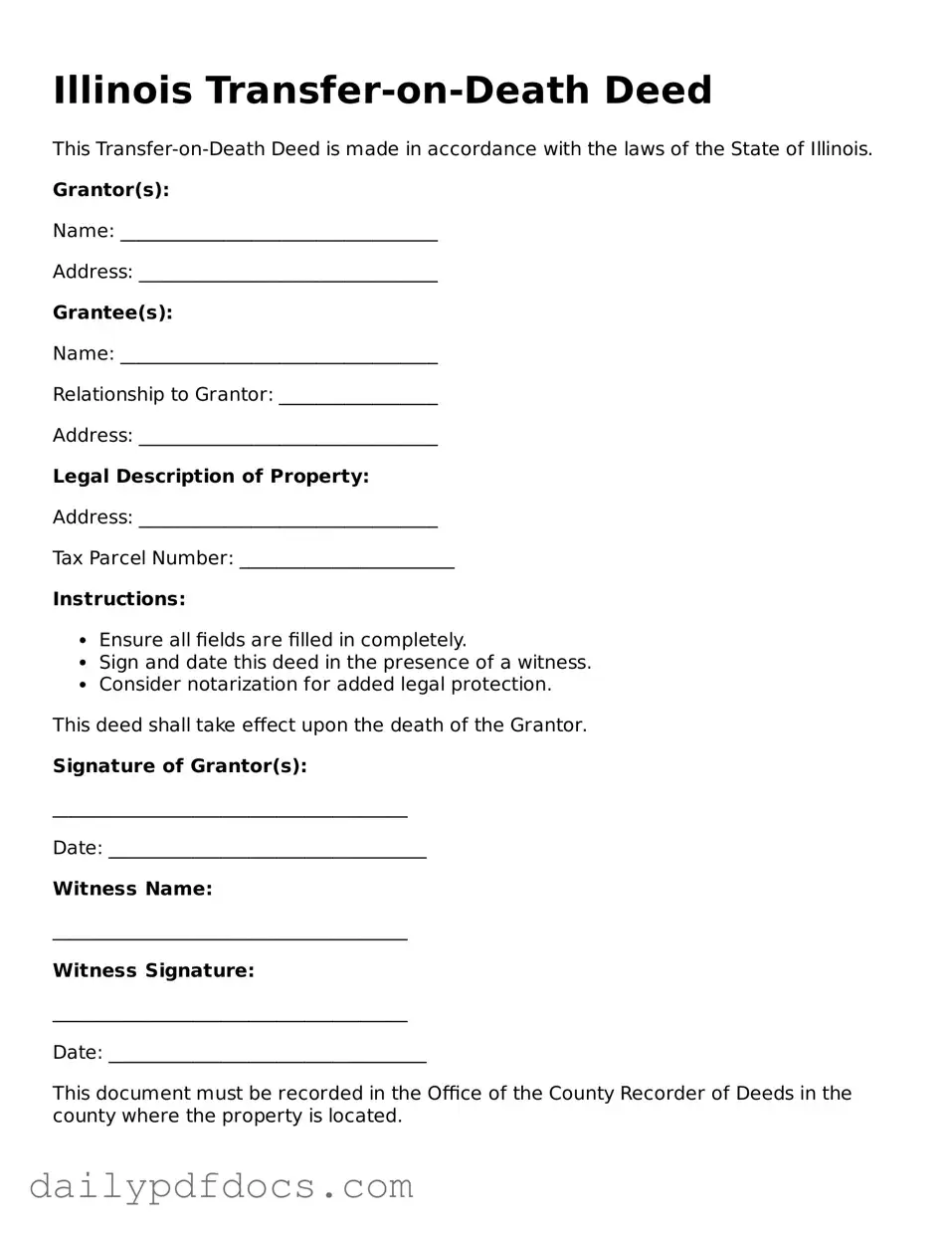What is a Transfer-on-Death Deed in Illinois?
A Transfer-on-Death Deed (TOD Deed) is a legal document that allows property owners in Illinois to transfer their real estate directly to a designated beneficiary upon their death. This process bypasses the probate court, making it a simpler and often quicker way to pass on property to heirs. The owner retains full control of the property during their lifetime, and they can sell or change the beneficiary at any time before their death.
Who can use a Transfer-on-Death Deed?
Any individual who owns real estate in Illinois can use a Transfer-on-Death Deed. This includes single individuals, married couples, and even joint owners. However, it’s important to ensure that the deed is properly executed and recorded to be valid. It’s advisable to consult with a professional if there are any complexities in ownership or if multiple beneficiaries are involved.
How do I create a Transfer-on-Death Deed?
To create a Transfer-on-Death Deed, you will need to fill out the appropriate form, which includes details about the property and the beneficiary. After completing the form, it must be signed by the property owner in front of a notary public. Once notarized, the deed must be recorded with the county recorder’s office where the property is located. This step is crucial, as the transfer only takes effect upon the owner’s death if the deed is recorded.
Can I change the beneficiary on a Transfer-on-Death Deed?
Yes, you can change the beneficiary at any time before your death. To do this, you will need to create a new Transfer-on-Death Deed that names the new beneficiary and record it with the county recorder’s office. Additionally, you may also revoke the original deed if you no longer wish for the previous beneficiary to inherit the property. Proper documentation is key in these situations.
What happens if I sell the property before I die?
If you sell the property before your death, the Transfer-on-Death Deed becomes void. The new owner will not be affected by the deed, as it only applies to the original property owner. If you wish to transfer a different property after selling, you will need to create a new Transfer-on-Death Deed for that new property.
Are there any tax implications with a Transfer-on-Death Deed?
Generally, transferring property through a Transfer-on-Death Deed does not trigger immediate tax consequences. The property is still considered part of the owner’s estate for tax purposes until their death. However, beneficiaries may need to consider capital gains taxes based on the property’s value at the time of the owner's death. It’s wise to consult a tax professional for personalized advice regarding your situation.
Is a Transfer-on-Death Deed the right choice for everyone?
A Transfer-on-Death Deed can be a beneficial tool for many, but it may not be suitable for everyone. It works well for straightforward situations where the owner wants to pass property to a single beneficiary. However, if there are multiple heirs, complex family dynamics, or if the property is subject to debts, other estate planning tools may be more appropriate. It’s important to evaluate your individual circumstances and possibly seek legal advice to determine the best approach for your estate planning needs.
